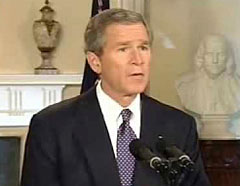2001

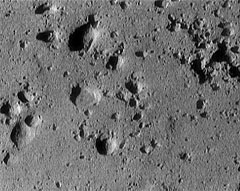
NASA Public Domain Image
February 12, 2001
First Landing on an Asteroid
The Near Earth Asteroid Rendezvous (NEAR) spacecraft is successfully landed on the surface of the asteroid Eros. NEAR sends back unprecedented images of the asteroid's surface during its hour-long descent. NEAR had been in orbit around Eros since February 14, 2000. It was never designed to land on the asteroid. The landing is a last minute idea to get some additional data as the spacecraft as it runs out of fuel and nears the end of its mission.

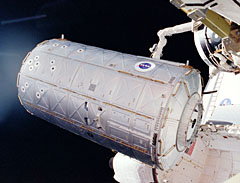
NASA Public Domain Image
February 14, 2001
100th U.S. Spacewalk
U.S. astronauts Thomas Jones and Robert Curbeam Jr. make history during Space Shuttle mission STS-98 as they perform the 100th spacewalk in the United States space program. This historic spacewalk is part of the installation procedure for the new Destiny Laboratory Module of the International Space Station (ISS). Destiny becomes the first NASA lab to be permanently used since the days of Skylab nearly three decades earlier.

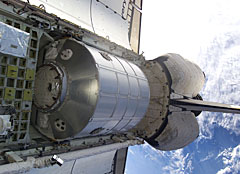
NASA Public Domain Image
March 11, 2001
New Space Walk Record
U.S. Shuttle astronauts Susan Helms and Jim Voss set a new endurance record during Space Shuttle mission STS-102 as they prepare the space station for the future arrival of the new Leonardo module. The total time spent in space is 8 hours 56 minutes. During a second spacewalk, the two astronauts install an External Stowage Platform for spare station parts.

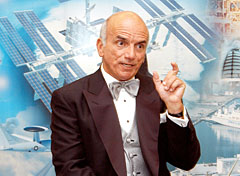
Wikipedia Public Domain Image
April 28, 2001
First Tourist in Space
American businessman Dennis Tito becomes the first tourist to fly into space. His 20 million dollar offer is rejected by the United States, but is later welcomed by the Russian space program. A Soyuz space capsule delivers the space tourist and the Russian crew to the International Space Station, where Tito is given limited access to the station.
2003

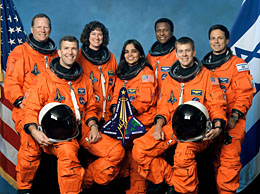
NASA Public Domain Image
February 1, 2003
Space Shuttle
Columbia Disaster
The space shuttle Columbia breaks up in the atmosphere over Texas while returning to the Kennedy space center. The entire seven-member crew of STS-107 is lost in the accident. Columbia was the first space shuttle to fly and this is her 28th mission. Investigations conclude that a piece of foam from the fuel tank broke off during launch and punctured the orbiter's left wing. This hole in the wing allowed hot gases to enter during reentry, causing the orbiter lose control and break up while traveling at over 13,000 miles per hour. NASA grounds the entire space shuttle fleet until safety updates can be made.

February 1, 2003
President Bush's
Columbia Speech
On February 1, 2003, the Space Shuttle Columbia was only 16 minutes away from touchdown at the Kennedy Space Center in Florida when a damaged heat tile caused the spacecraft to disintegrate in mid-air air, killing all seven crew members. Later that day, President George W. Bush addresses the nation about the terrible tragedy. He talks about the families and the grief, but also talks about the hope and the ongoing spirit of exploration and discovery.


Dyor / CC BY-SA 3.0
October 15, 2003
First Chinese Manned Spaceflight
The Shenzhou 5 spacecraft is launched from Jiuquan Satellite Launch Center in China. It carries Yang Liwei who becomes the first man sent into space by the Chinese space program. This makes China the third country in the world to have independent human spaceflight capability after Russia and the United States. China sets goals for an eventual manned space station and a manned mission to the Moon.
2004

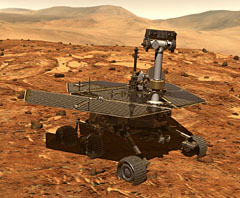
NASA Public Domain Image
January 3, 2004
Spirit Rover Lands on Mars
After parachuting through the atmosphere and bouncing to a stop using giant air bags, the Mars rover Spirit lands on the red planet in a location known as Gusev crater. Designed to last only three months, Spirit and its sister rover, Opportunity, prove to be unusually tough and the mission is continued for several years. Spirit continues to roam the red planet until it becomes stuck in soft sand on May 1, 2009. It then continues to function as a stationary science platform until communication is finally lost on March 22, 2010.

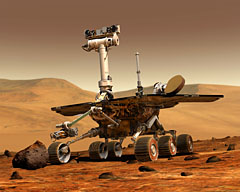
NASA Public Domain Image
January 25, 2004
Opportunity Rover Lands on Mars
The sister rover to Spirit, Opportunity lands on the opposite side of the planet Mars in a location known as Meridiani Planum. After a mission extension of several years, Opportunity and its sister, Spirit, send back extraordinary images of the Martian surface and perform chemical experiments on rock samples. Many new discoveries include layered rock formations that could have been formed in water and tornado-like dust devils moving across the surface. Designed to last only a few months, Opportunity continues to operate until a dust storm covers its solar panels on June 10, 2018. The little rover officially ceases communication with Earth in August 2018.

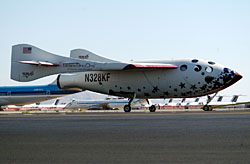
Photograph by D Ramey Logan / CC BY-SA 3.0
June 21, 2004
First Manned Private
Space Flight
A privately financed and built spacecraft known as SpaceShipOne makes history as the first private, non-government spacecraft to be flown into space. Pilot Mike Melvill flies the craft to an altitude of 62 miles (100 kilometers). The team hopes to win the Ansari X PRIZE by making two space flights within two weeks of each other. SpaceShipOne was built by famed aerospace designer Burt Rutan of Mojave-based Scaled Composites, with financial backing from Microsoft Corporation co-founder Paul Allen.

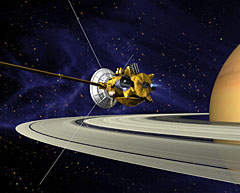
NASA Public Domain Image
July 1, 2004
Cassini Probe Arrives at Saturn
After a journey of nearly seven years, the Cassini probe arrives at the planet Saturn, where it will spend several years photographing the ringed planet and its many moons. Cassini carries with it another small probe called Huygens that will later be sent to land on Saturn's largest moon, Titan. Huygens will attempt to send back to Earth the first images of the surface of Titan. Cassini continues to operate until September 15, 2017, when it is de-orbited to burn up in Saturn's upper atmosphere.

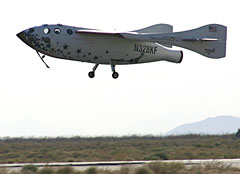
Ikluft / CC BY-SA 4.0
October 5, 2004
X PRIZE Awarded
SpaceShipOne claims the $10 million X PRIZE by making its second trip into space within two weeks. On this flight, civilian astronaut Brian Binnie pilots the craft to an altitude of 367,442 feet (112 kilometers), far surpassing the 100-kilometer (62.5 miles) altitude required to win the X PRIZE. The flight also breaks the altitude record for an airplane, set by X-15 pilot Joseph Walker in 1963. The SpaceShipOne team hopes to license their technology for use in future commercial space flights.
2005

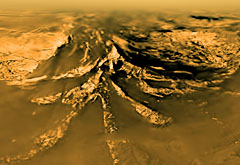
ESA/NASA/JPL/University of Arizona
January 14, 2005
First Landing on an
Alien Moon
After descending by parachute for 2 hours and 28 minutes, the Huygens probe lands on Saturn's largest moon, Titan. Even though a technical glitch limits the probe's imaging capabilities, Huygens is successful in sending a series of images back to Earth. For the first time, scientists get a look at the surface of a moon other than our own. Descent images show mountains and river channels. Images near the lander show a surface littered with small rocks. Dark areas on some images could indicate the presence of liquid methane.

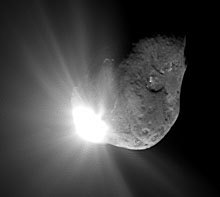
NASA Public Domain Image
July 4, 2005
First Impact With a Comet
After a journey of 174 days, the Deep Impact space probe fulfills its mission by slamming into a comet known as Tempel 1. The probe impacts the comet at a speed of 10.3 kilometers (6.3 miles) per second. The probe's mothership photographs the resulting impact and analyzes the resulting debris. Among the many discoveries is water ice within the comet.

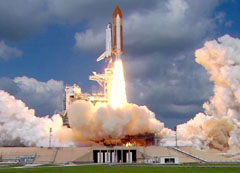
NASA Public Domain Image
July 26, 2005
Space Shuttle Returns to Flight
The space shuttle Discovery launches from the Kennedy space center on mission STS-114, marking the shuttle's return to flight two and a half years after the Columbia disaster. The flight is not entirely successful, however. Cameras on the orbiter record a piece of foam breaking off from the fuel tank during launch, sparking fears of another Columbia-style accident. NASA again grounds the shuttle fleet until the liquid fuel tank can be redesigned.
2006

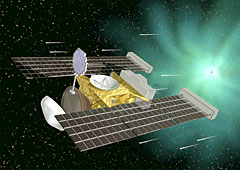
NASA Public Domain Image
January 15, 2006
First Comet Samples Returned to Earth
After a journey of nearly seven years and 2.9 billion miles (4.6 billion kilometers), NASA's Stardust mission successfully comes to a conclusion in the desert salt flats of Utah. The capsule safely parachutes to the ground after collecting dust and particle samples from comet Wild 2. The samples are collected by the probe in the comet's coma within 147 miles (236 kilometers) of the comet’s nucleus. Scientists believe that comets may be composed of the same primitive material that initially formed the Solar System.
2009

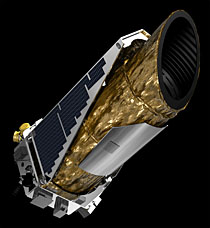
NASA Public Domain Image
March 6, 2009
The Hunt for Extrasolar Planets
The Kepler Space Telescope launches on a mission to search for planets outside our solar system. This first-of-its-kind spacecraft uses a technique known as the "transit" method to search for planets orbiting distant stars. As a planet moves in front of the star's disk, the light from the star dims ever so slightly in a regular cycle. The telescope can use these cycles to detect a planet and approximate its size and orbit. Kepler operates until October 30, 2018 and discovers 2,662 extrasolar planets.
2010

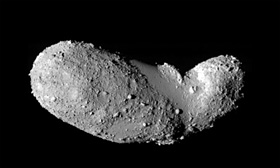
Government of Japan / CC BY 4.0
June 13, 2010
First Asteroid Samples Returned to Earth
After a seven-year mission, the Japanese spacecraft Hayabusa returns the first samples from an asteroid to the Earth. The spacecraft is launched in May 2003 on a trip to an asteroid known as 25143 Itokawa. Hayabusa lands on the asteroid and collects samples in the form of tiny grains. The spacecraft returns to Earth and the samples land successfully in the southern Outback of Australia on June 13, 2010.

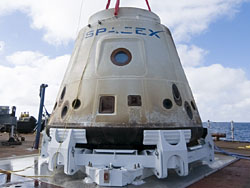
SpaceX / CC0
December 8, 2010
First Commercial Orbit and Return
A company called SpaceX becomes the first private company to launch a spacecraft to orbit and return it safely to the Earth. Officially named COTS Demo Flight 1, this landmark mission had only been accomplished by governments before this day. The unmanned capsule, known as Dragon, is launched from Cape Canaveral, Florida, on December 8 atop a Falcon 9 rocket. After completing two orbits around the earth, the Dragon spacecraft successfully splashes down in the Pacific Ocean off the coast of Mexico.





